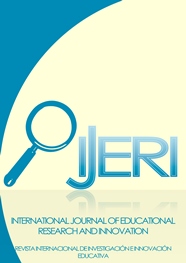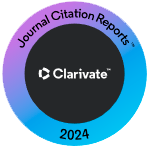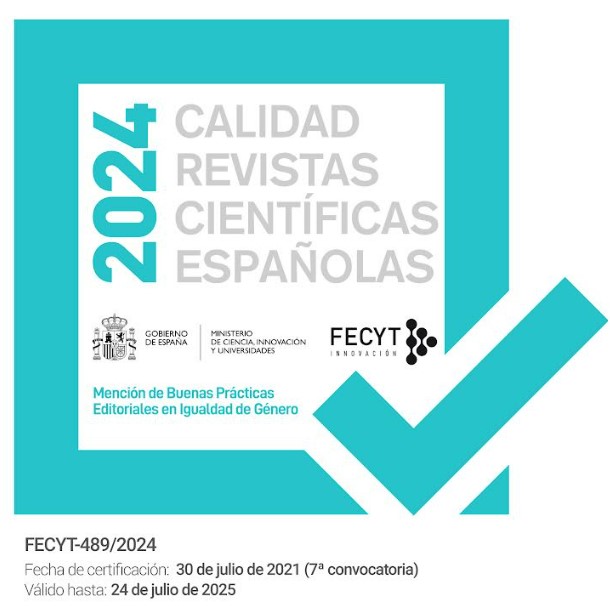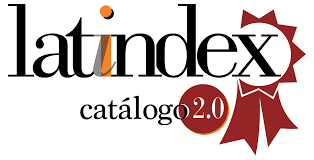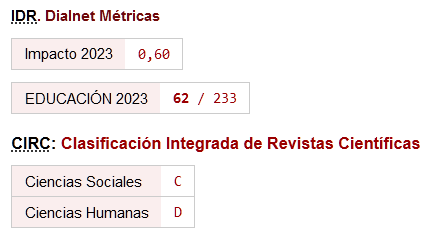Implementing kiva antibullying program in pioner schools in Spain
DOI:
https://doi.org/10.46661/ijeri.6252Keywords:
Kiva, bullying, evaluation, program implementation, school violenceAbstract
This study analyzes the implementation of the KiVa Antibullyiing program in Spain with 10 pioneer schools.
This research has two aims. The first is a preliminary evaluation of the KiVa program’s implementation in the pioneer schools in Spain. To do so, the perceived levels of bullying and victimization have been analyzed through the surveys done anonymously by the students of 10 KiVa schools before and after the program’s implementation. The second is to identify the factors which explain the phenomenon with a view to knowing the background of the victims and the bullies and proposing courses of action. To do so, the school environment (atmosphere in the classroom and in the school), the perception of the students concerning teachers and parents in relation with the phenomenon (attitude, capacity and behavior) and the communication of the victims were analyzed in their environment in the case of bullying. In the empirical study, analyses were performed of the prevalence of bullying before and after the first year of program’s implementation, as well as an analysis of independence and multiple correspondences. This enables identifying the key variables and drawing conclusions about how the children surveyed live out school bullying in the pioneer Spanish KiVa schools, and what aspects should guide other schools interested in preventing bullying.
Downloads
References
Allen, K. P. (2010). A bullying intervention system in high school: A two-year school-wide follow-up. Studies in Educational Evaluation, 36(3), 83-92.
Andújar, A. G., & León, A. M. (2018). Posibilidades del programa KiVa para hacer frente al bullying homofóbico y transfóbico. Revista Complutense de Educación, 29(4), 943-958.
Axford, N., Bjornstad, G., Clarkson, S., Ukoumunne, O. C., Wrigley, Z., Matthews, J., & Hutchings, J. (2020). The effectiveness of the KiVa bullying prevention program in Wales, UK: Results from a pragmatic cluster randomized controlled trial. Prevention Science, 21(5), 615-626.
Bozan, K., Evgi̇n, D., & Gördeles Beşer, N. (2021). Relatıonship bullying in adolescent period with family functionalities and child behaviors. Psychology in the Schools, 58, 1451-1473.
Clarkson, S., Axford, N., Berry, V., Edwards, R.T., Bjornstad, G., Wrigley, Z., Charles, J., Hoare, Z., Ukoumunne, O.C., Matthews, J., Hutchings, J. (2016). Effectiveness and micro-costing of the KiVa school-based bullying prevention programme in Wales: study protocol for a pragmatic definitive parallel group cluster randomised controlled trial, BMC Public Health, 16 (1), 104. https://doi.org/10.1186/s12889-016-2746-1
Craig, W., Pepler, D., & Atlas, R. (2000). Observarions of bullying in the playground and in the classroom. School Psychology International, 21(1),22-36.
Evans, C. B., Fraser, M. W., & Cotter, K. L. (2014). The effectiveness of school-based bullying prevention programs: A systematic review. Aggression and Violent Behavior, 19(5), 532-544.
Farrington, D. P., & Ttofi, M. M. (2009). School‐based programs to reduce bullying and victimization. Campbell systematic reviews, 5(1). https://doi.org/10.4073/csr.2009.6
Gaffney, H., Ttofi, M. M., & Farrington, D. P. (2019). Evaluating the effectiveness of school-bullying prevention programs: An updated meta-analytical review. Aggression and violent behavior, 45, 111-133.
Green, Vanessa A., et al. (2020).An evaluation of the KiVa anti-bullying program in New Zealand. International journal of bullying prevention 2 (3), 225-237.
Haataja, A., Sainio, M., Turtonen, M., & Salmivalli, C. (2016), Implementing the KiVa antibullying program: Recognition of stable victims. Educational Psychology, 36 (3), 595-611.
Huitsing, G., Lodder, G. M., Browne, W. J., Oldenburg, B., Van der Ploeg, R., & Veenstra, R. (2020). A large-scale replication of the effectiveness of the KiVa antibullying program: a randomized controlled trial in the Netherlands. Prevention science, 21, 627-638.
Hutchings, J., & Clarkson, S. (2015). Introducing and piloting the KiVa bullying prevention programme in the UK. Educational & Child Psychology, 32 (1), 49-59.
Kärnä, A., Voeten, M., Little, T. D., Alanen, E., Poskiparta, E., & Salmivalli, C. (2013). Effectiveness of the KiVa Antibullying Program: Grades 1–3 and 7–9. Journal of Educational Psychology, 105 (2), 535-551.
Kärnä, A., Voeten, M., Little, T. D., Poskiparta, E., Alanen, E., & Salmivalli, C. (2011a). Going to scale: A non randomized nationwide trial of the KiVa antibullying program for grades 1–9. Journal of Consulting and Clinical Psychology, 79(6), 796-805.
Kärnä, A., Voeten, M., Little, T., Poskiparta, E., Kaljonen, A., & Salmivalli, C. (2011b). A large-scale evaluation of the KiVa antibullying program: Grades 4-6. Child Development, 82 (1),311-330.
Mäkelä, T., & López Catalán, B. (2018). Programa de convivencia y anti-acoso escolar KiVa: Impacto y reflexión. Anales de la Fundación Canis Majoris, 2, 234-258. http://canismajoris.es/wp-content/uploads/Revista-Anales-FCM-2017-INTERACTIVO.pdf
Mitchel, R. M., Mendiola, B. J., Schumacker, R. and Lowery, X. (2016). Creating a school context of success. Journal of Educational Administration, 54(6),626-646.
Modecki, K. L., Minchin, J., Harbaugh, A. G., Guerra, N. G., & Runions, K. C. (2014). Bullying prevalence across contexts: A meta-analysis measuring cyber and traditional bullying. Journal of Adolescent Health, 55(5), 602-611.
Nocentini, A., & Menesini, E. (2016). KiVa anti-bullying program in Italy: Evidence of effectiveness in a randomized control trial. Prevention Science, 17(8), 1012–1023.
Olweus, D. (1996). The Revised Olweus Bully ⁄ Victim Questionnaire. Research Center for Health Promotion ,University of Bergen, Bergen, Norway.
Ruiz Benítez, B., Martín Barato, A., López-Catalán, B., Hernán-García, M., & Mäkelä, T. (2016). ¿Convivencia ó Bullying? Análisis, prevención y afrontamiento del acoso entre iguales. https://www.observatoriodelainfancia.es/ficherosoia/documentos/5406_d_EASP_Convivencia%20o%20Bullying_Serie%20Infancia_CONISBN.pdf
Sainio, M., Herkama, S., Kontio, M., & Salmivalli, C. (2019). KiVa Antibullying Program. Making an Impact on School Bullying: Interventions and Recommendations, (pp. 45–66). Routledge/Taylor & Francis Group. https://doi.org/10.4324/9781351201957-3
Saarento, S., Boulton, A., & Salmivalli, C. (2015). Reducing bullying and victimization: Student- and classroom-level mechanisms of change. Journal of Abnormal Child Psychology, 43, 61-76.
Salmivalli, C., K. Lagerspetz, K. Björkqvist, K. Österman, & A. Kaukiainen. (1996). Bullying as a Group Process: Participant Roles and their Relations to Social Status within the Group. Aggressive Behavior, 22 (1), 1–15.
Salmivalli, C., Kärnä, A., & Poskiparta, E. (2011). Counteracting bullying in Finland: The KiVa program and its effects on different forms of being bullied. International Journal of Behavioral Development, 35 (5), 405-411.
Downloads
Published
How to Cite
Issue
Section
License
Copyright (c) 2022 Blanca López Catalán, Tiina Mäkela, Francisca Sánchez Sánchez, Luis López Catálan

This work is licensed under a Creative Commons Attribution-NonCommercial-NoDerivatives 4.0 International License.

